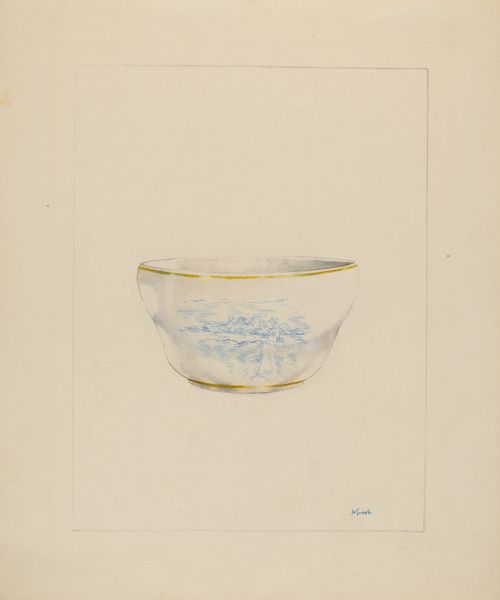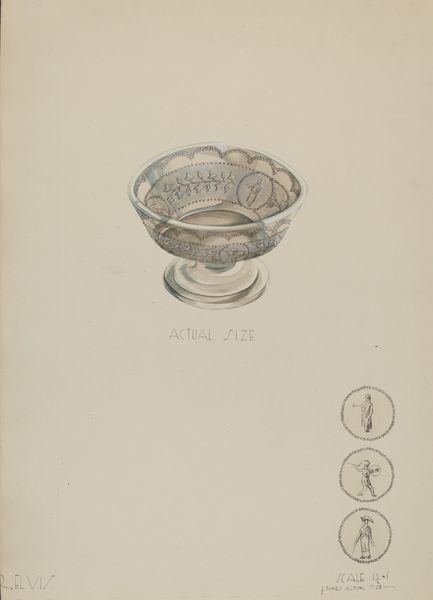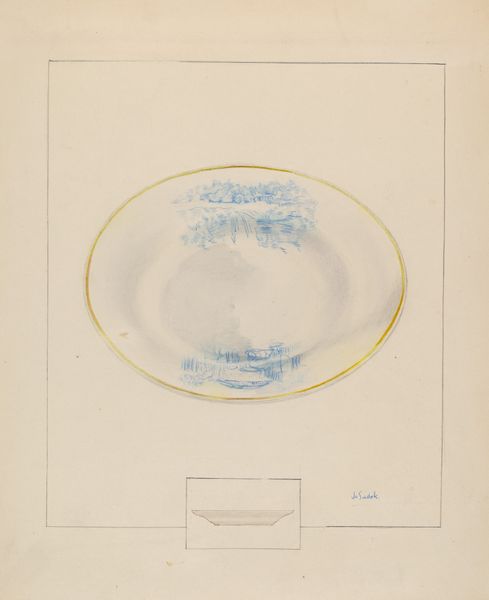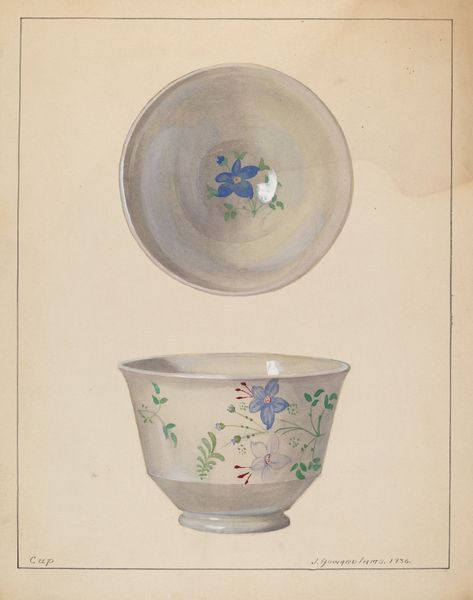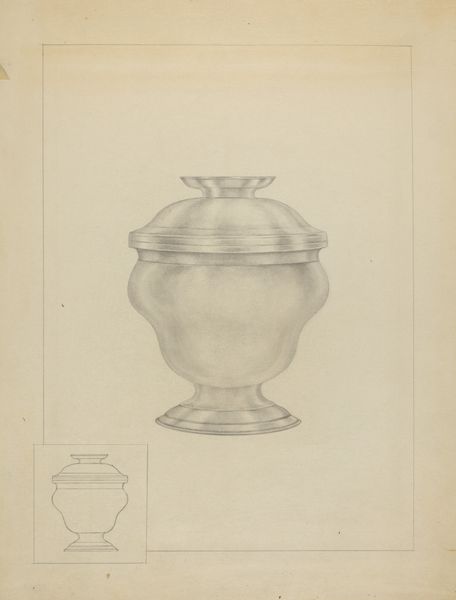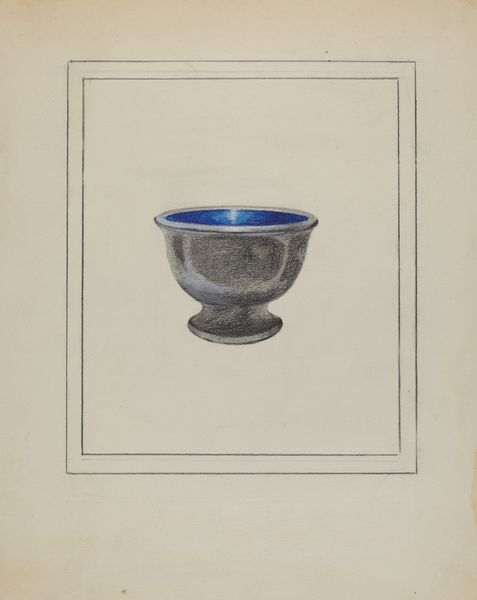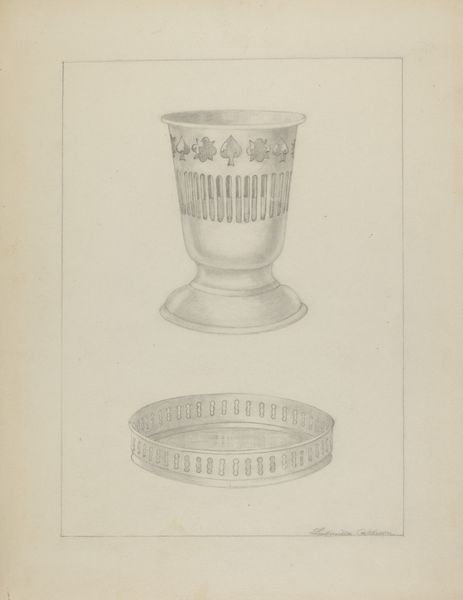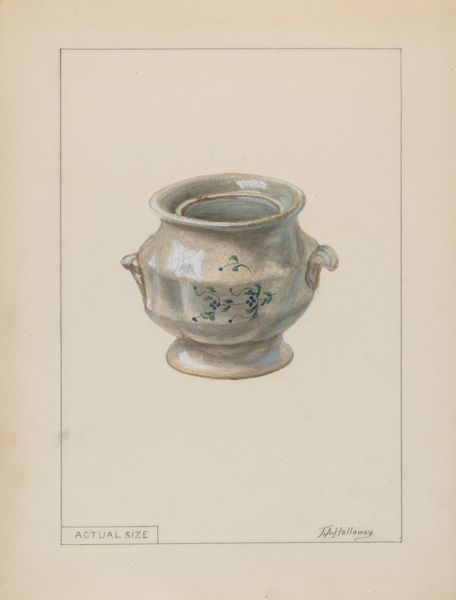
drawing, watercolor
#
drawing
#
water colours
#
watercolor
#
watercolor
Dimensions: overall: 28.1 x 23.2 cm (11 1/16 x 9 1/8 in.) Original IAD Object: 6" x 3 1/4" x 3 1/2"
Copyright: National Gallery of Art: CC0 1.0
Curator: Before us, we have Joseph Sudek's watercolor work, simply titled "Bowl," created sometime between 1935 and 1942. Editor: It has an ephemeral feel, doesn’t it? Almost ghostly in its lightness. I’m drawn to the delicate rendering of the bowl’s form, the soft blending of watercolors creates subtle tonal variations. The limited palette contributes to the piece’s quietude. Curator: The choice of subject matter is itself revealing, though. Why choose something so mundane? Sudek was very interested in what it meant to capture images of objects that occupied a different social context than the established salon culture of his period. His career sought to elevate humble, overlooked aspects of daily life to a position of consideration within artistic practice. Editor: That rings true. Even the draftsperson-like quality of this watercolor feels intentional. I mean, there is a whole technical drawing in the corner—it gives the impression of function and form explored in tandem. Look at how the slight irregularities in the bowl’s shape lend it character, warmth even. There’s tension created by that geometric schema on the bottom corner that provides another lens to view the form through. Curator: Absolutely, and it begs us to question what our expectations were of photography and painting, both during his practice, and today. Was he trying to democratize artistic practices, opening up ways for other types of media to be regarded with as much intellectual rigour? Editor: Yes, or to challenge our ideas about what truly qualifies an object as "beautiful" or "artistic" in the first place. The texture he coaxes out of those watercolor washes, in turn, prompts questions about what painting, specifically, is capable of as a medium. Curator: In a sense, by embracing simplicity and everyday objects, he compels us to find significance in the ordinary and re-evaluate the role of art in shaping our perceptions. He might also ask us if painting everyday objects is an act of resistance. Editor: The way it hovers on the edge of perception makes me see something very powerful in the process of observing an object deeply. It’s as if the very act of attentive observation becomes an artistic statement in and of itself.
Comments
No comments
Be the first to comment and join the conversation on the ultimate creative platform.
